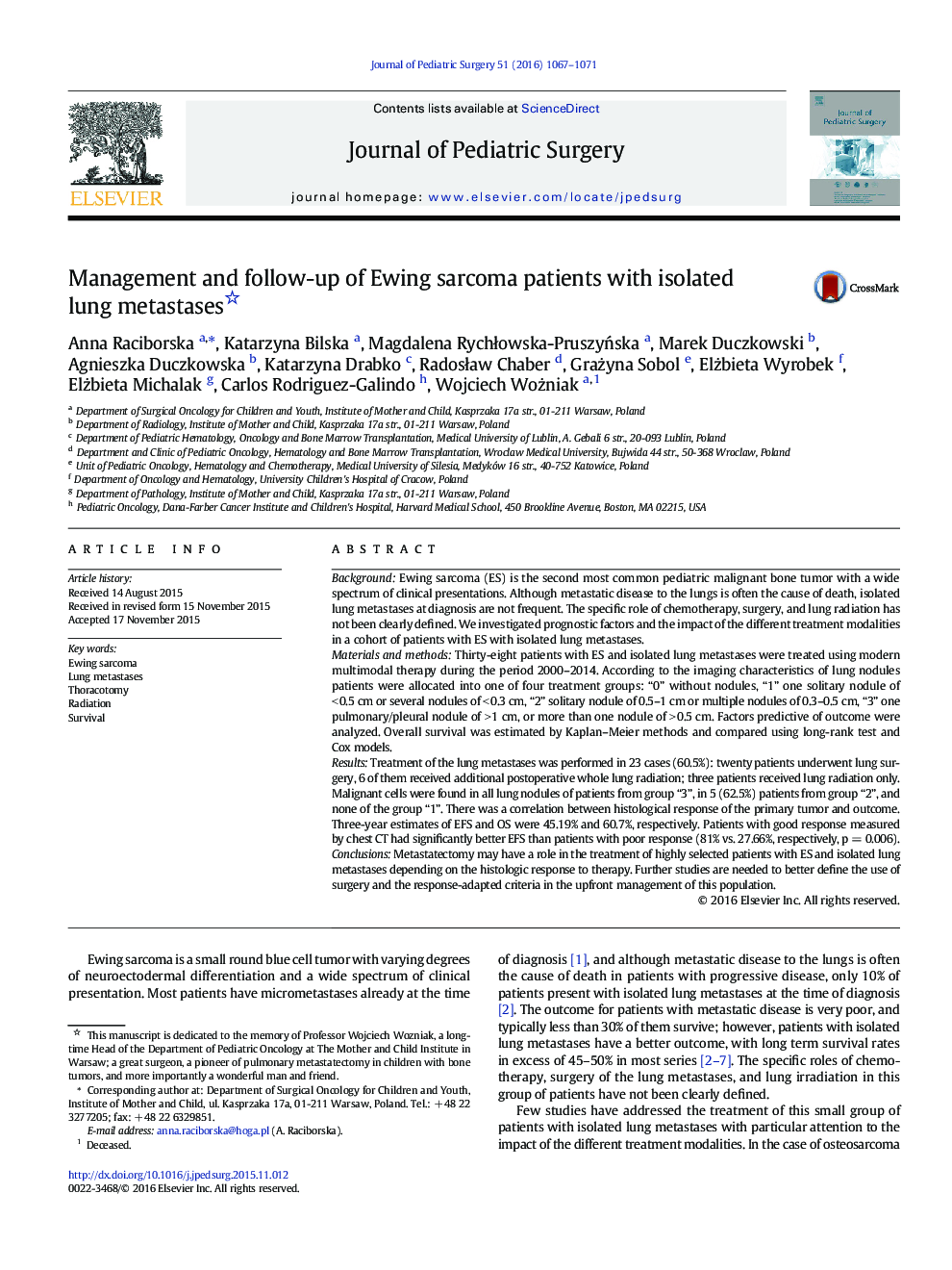| Article ID | Journal | Published Year | Pages | File Type |
|---|---|---|---|---|
| 4154778 | Journal of Pediatric Surgery | 2016 | 5 Pages |
BackgroundEwing sarcoma (ES) is the second most common pediatric malignant bone tumor with a wide spectrum of clinical presentations. Although metastatic disease to the lungs is often the cause of death, isolated lung metastases at diagnosis are not frequent. The specific role of chemotherapy, surgery, and lung radiation has not been clearly defined. We investigated prognostic factors and the impact of the different treatment modalities in a cohort of patients with ES with isolated lung metastases.Materials and methodsThirty-eight patients with ES and isolated lung metastases were treated using modern multimodal therapy during the period 2000–2014. According to the imaging characteristics of lung nodules patients were allocated into one of four treatment groups: “0” without nodules, “1” one solitary nodule of < 0.5 cm or several nodules of < 0.3 cm, “2” solitary nodule of 0.5–1 cm or multiple nodules of 0.3–0.5 cm, “3” one pulmonary/pleural nodule of > 1 cm, or more than one nodule of > 0.5 cm. Factors predictive of outcome were analyzed. Overall survival was estimated by Kaplan–Meier methods and compared using long-rank test and Cox models.ResultsTreatment of the lung metastases was performed in 23 cases (60.5%): twenty patients underwent lung surgery, 6 of them received additional postoperative whole lung radiation; three patients received lung radiation only. Malignant cells were found in all lung nodules of patients from group “3”, in 5 (62.5%) patients from group “2”, and none of the group “1”. There was a correlation between histological response of the primary tumor and outcome. Three-year estimates of EFS and OS were 45.19% and 60.7%, respectively. Patients with good response measured by chest CT had significantly better EFS than patients with poor response (81% vs. 27.66%, respectively, p = 0.006).ConclusionsMetastatectomy may have a role in the treatment of highly selected patients with ES and isolated lung metastases depending on the histologic response to therapy. Further studies are needed to better define the use of surgery and the response-adapted criteria in the upfront management of this population.
